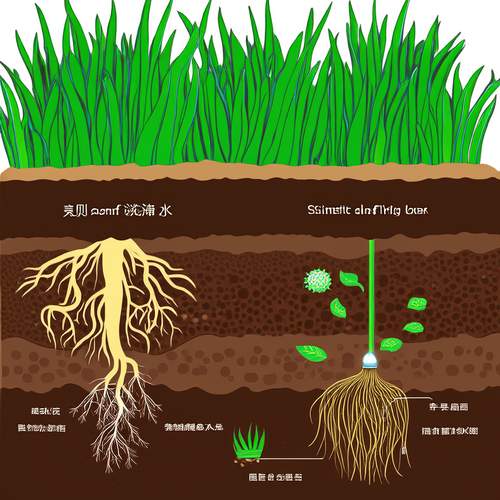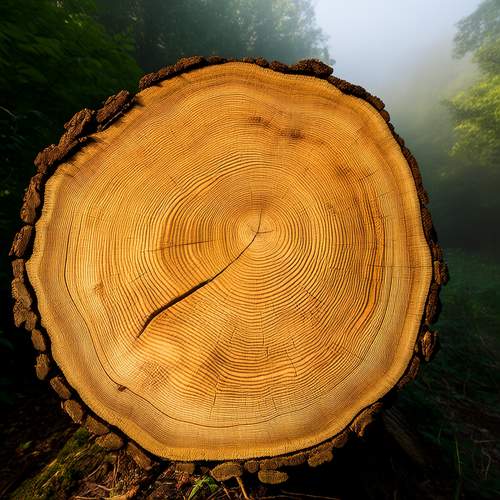In the quiet stillness of a forest, each tree holds within its trunk a meticulous record of time – a biological archive written in concentric circles. Dendrochronology, the scientific method of dating tree rings to the exact year they were formed, reveals far more than just a plant's age. This natural chronology captures environmental histories, climate patterns, and even ecological disturbances with astonishing precision.
The fundamental principle appears simple: each year, most temperate tree species produce one growth ring. The light-colored earlywood forms during spring's rapid growth period, while the darker latewood develops in summer's slower growth phase. Together, they create one annual marker. Yet beneath this apparent simplicity lies a complex language of environmental storytelling that scientists have spent decades learning to interpret.
Researchers examining cross-sections of ancient sequoias or core samples from boreal pines don't merely count rings like tally marks on a prison wall. They analyze ring-width patterns – sequences of wide and narrow bands that form unique fingerprints of growing conditions. Wide rings typically indicate favorable years with ample moisture and moderate temperatures, while narrow rings suggest environmental stress from drought, cold, or competition. These patterns become cross-referenceable timelines stretching back centuries.
Modern dendrochronology extends far beyond simple age determination. Paleoclimatologists use tree-ring data to reconstruct prehistoric climate conditions with remarkable resolution. A 2021 study published in Nature Climate Change utilized millennium-old oak chronologies to demonstrate how current warming trends exceed historical variability. The trees' cellular structures preserved chemical signatures of atmospheric changes, allowing scientists to track carbon isotope variations through time.
The technique's applications span unexpected domains. Archaeologists employ dendrochronology to date wooden artifacts and structures with unparalleled accuracy. When matching ring patterns between living trees and ancient beams, they can often pinpoint construction years to specific seasons. Art historians have even exposed forged paintings by analyzing the age of wood panels relative to the purported creation date of artworks.
Certain tree species serve as better historical recorders than others. Slow-growing conifers like bristlecone pines, some exceeding 5,000 years in age, provide exceptionally clear annual markers. Oak trees offer extensive chronologies in Europe due to their historical use in construction. Tropical species present greater challenges, as many lack distinct annual rings in consistent climates, though researchers are developing alternative dating methods for these environments.
Field collection requires careful methodology. Researchers use increment borers to extract pencil-thin cores without harming living trees. In fallen specimens, cross-sections are carefully prepared and sanded to reveal ring structures. Advanced imaging techniques including X-ray densitometry and laser scanning now complement traditional microscopic analysis, measuring cellular density and chemical composition within individual rings.
The global tree-ring database represents one of ecology's most valuable archives. The International Tree-Ring Data Bank contains over 4,000 chronologies from six continents, some extending back to the last Ice Age. This living library helps scientists understand phenomena like the Medieval Warm Period, volcanic winter events, and megadrought cycles that shaped human civilizations.
Recent technological advances are pushing dendrochronology's boundaries. Stable isotope analysis of individual rings now tracks historical air pollution and atmospheric circulation patterns. DNA extraction from ancient wood is revealing genetic adaptations to past climate changes. Some laboratories are even developing three-dimensional models of ring structures to study wood formation at cellular levels.
Climate change presents both challenges and opportunities for the field. Warming temperatures are altering growth patterns in ways that complicate traditional interpretations. Yet these very changes make tree-ring data more crucial than ever for understanding ecological responses. Researchers are establishing new baseline chronologies to document how forests adapt to contemporary environmental shifts.
Beyond scientific utility, tree rings hold profound cultural significance. Indigenous traditions worldwide have long recognized trees as keepers of time and memory. Modern dendrochronology increasingly collaborates with these traditional knowledge systems, creating richer understandings of environmental history. In an era of rapid ecological transformation, these silent chronologists continue providing perspective on humanity's place within nature's timescales.
The next time you encounter a tree stump, pause to observe its rings. That weathered surface contains not just years, but stories – of rainy seasons and droughts, of cold snaps and heatwaves, of environmental changes both gradual and catastrophic. Dendrochronology transforms these natural archives into powerful tools for understanding our planet's past and anticipating its future.

By /May 21, 2025

By /May 21, 2025

By /May 21, 2025

By /May 21, 2025

By /May 21, 2025

By /May 21, 2025

By /May 21, 2025

By /May 21, 2025

By /May 21, 2025

By /May 21, 2025

By /May 21, 2025

By /May 21, 2025

By /May 21, 2025

By /May 21, 2025

By /May 21, 2025

By /May 21, 2025

By /May 21, 2025

By /May 21, 2025

By /May 21, 2025

By /May 21, 2025